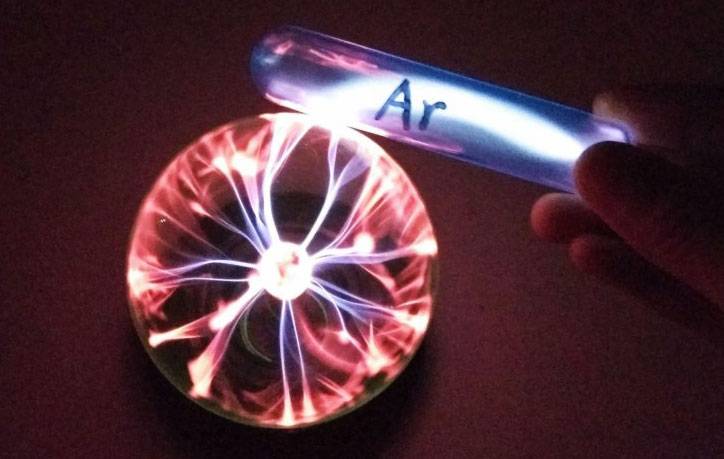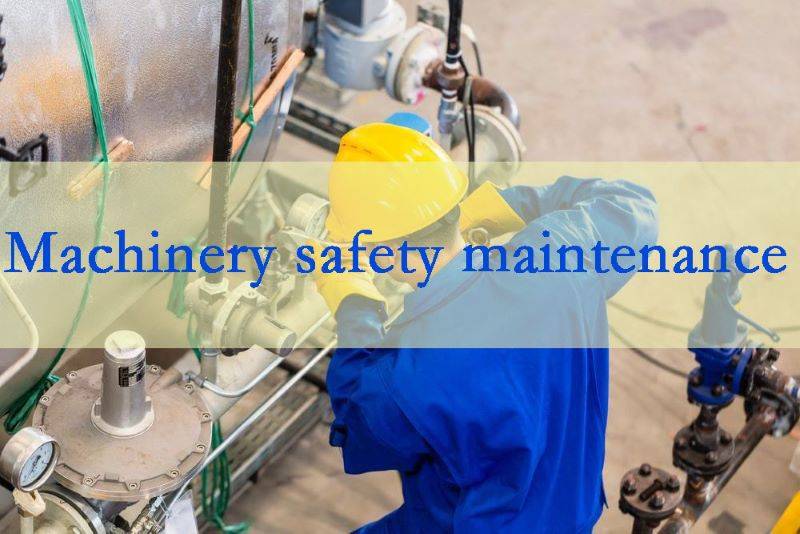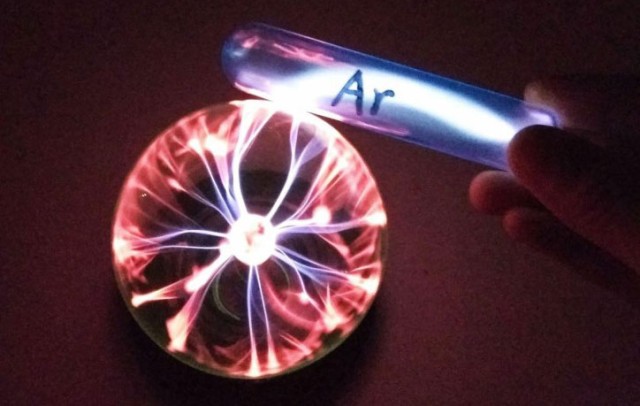Understanding and Preparing the Mixed Atmosphere
Composition and Impact of Mixed Atmosphere
The mixed atmosphere, a critical component in heat treatment processes, is typically composed of a blend of various gases in specific proportions. This composition is meticulously crafted to either replicate a particular heat treatment environment or to achieve a desired process outcome. The gases commonly involved in such mixtures include inert gases like argon and nitrogen, as well as reactive gases such as hydrogen and methane, each contributing uniquely to the overall atmosphere.
The impact of these gas mixtures on the heat treatment process is profound. For instance, inert gases help to prevent oxidation and decarburization, ensuring the integrity of the treated materials. On the other hand, reactive gases can facilitate carburization or nitriding, altering the surface properties of the materials to enhance their hardness and wear resistance. The exact composition and ratio of these gases are crucial, as they directly influence the thermal conductivity, specific heat capacity, and chemical reactivity within the furnace environment.
To illustrate, consider a typical mixed atmosphere used for carburizing steel. This mixture might consist of 90% nitrogen, 5% hydrogen, and 5% carbon monoxide. The nitrogen provides an inert environment, while the hydrogen aids in the removal of oxide scales. The carbon monoxide, acting as a carburizing agent, diffuses into the steel surface, increasing its carbon content and thus enhancing its hardness.
| Gas Type | Role in Mixed Atmosphere | Impact on Heat Treatment |
|---|---|---|
| Inert Gases | Prevent oxidation and decarburization | Material integrity |
| Reactive Gases | Facilitate carburization or nitriding | Surface property enhancement |
| Aid in removing oxide scales | Surface cleanliness |
The precise control of these gas mixtures is essential to achieving the desired heat treatment outcomes. Any deviation in the gas composition can lead to suboptimal results, potentially compromising the quality and performance of the treated materials. Therefore, the selection and preparation of these gases, as well as the monitoring and adjustment of their flow rates, are pivotal steps in the operation of an inert atmosphere protection furnace.

Gas Selection and Preparation
Selecting the appropriate inert gas and other gases is a critical step in ensuring the effectiveness and safety of the heat treatment process. This selection must be made in accordance with the specific process requirements, taking into account factors such as the desired heat treatment outcome, the materials being treated, and the operational safety considerations.
Gas Purity and Quality
The purity of the gases used is paramount. Even minor impurities can significantly alter the atmosphere within the furnace, leading to unpredictable results. For instance, oxygen or moisture traces in an inert gas can react with the materials being treated, potentially compromising the integrity of the final product. Therefore, it is essential to source gases from reliable suppliers who can guarantee high purity levels.
Gas Supply Equipment
Preparing the gas supply equipment involves setting up a system that ensures a continuous, controlled flow of gases into the furnace. This typically includes:
- Gas Cylinders: Containers that store the gases at high pressures. Proper handling and storage of these cylinders are crucial to prevent accidents.
- Pressure Reducing Valves: Devices that reduce the high pressure in gas cylinders to a safe, usable pressure for the furnace.
- Flow Meters: Instruments that measure the flow rate of the gases, ensuring that the correct proportions are maintained.
Equipment Setup and Testing
Before commencing the heat treatment process, it is advisable to conduct a thorough setup and testing of the gas supply equipment. This includes:
- Leak Testing: Checking for any gas leaks in the system to prevent potential hazards.
- Calibration: Ensuring that all instruments, such as pressure reducing valves and flow meters, are calibrated to function accurately.
- Safety Protocols: Implementing safety protocols, such as the use of gas detectors and alarms, to mitigate risks associated with gas leaks or equipment malfunction.
By meticulously selecting and preparing the gases and their supply equipment, operators can ensure a stable and controlled atmosphere within the furnace, thereby optimizing the heat treatment process and enhancing the quality of the final product.
Operational Controls and Monitoring
Atmosphere Control and Stability
Maintaining the uniformity and stability of the atmosphere within an inert atmosphere furnace operating in a mixed atmosphere is paramount. This is typically managed through a sophisticated flow control system, which meticulously regulates the introduction of each gas into the furnace chamber. The system ensures that the gases are delivered in a precisely calibrated ratio, thereby maintaining a consistent environment throughout the heat treatment process.
To achieve this level of precision, the flow control system integrates advanced technologies such as mass flow controllers and proportional valves. These components work in tandem to monitor and adjust the flow rates of individual gases, ensuring that the desired mixture remains undisturbed. For instance, if the process requires a specific ratio of nitrogen to argon, the system will continuously adjust the inflow of each gas to maintain that ratio, regardless of fluctuations in demand or external conditions.
Moreover, the stability of the atmosphere is further fortified by the use of real-time monitoring systems. These systems employ sensors and analyzers to continuously assess the composition and concentration of gases within the furnace. Should any deviation from the preset parameters be detected, the flow control system can swiftly implement corrective measures, thereby preserving the integrity of the heat treatment environment.
In summary, the control of atmosphere uniformity and stability in a mixed atmosphere furnace is a multi-faceted process that relies on precise flow control, advanced monitoring technologies, and rapid response mechanisms. This integrated approach ensures that the furnace operates under the most optimal conditions, ultimately enhancing the quality and consistency of the heat treatment outcomes.

Real-time Monitoring of Atmosphere
To ensure the stability and uniformity of the atmosphere within the furnace chamber, it is crucial to install advanced atmosphere analyzers. These devices provide a real-time, comprehensive picture of the composition and concentration of gases present in the chamber. This real-time data allows for immediate adjustments to the gas flow, ensuring that the atmosphere remains consistent throughout the heat treatment process.
| Feature | Description |
|---|---|
| Composition Analysis | Detailed breakdown of gas types and their concentrations. |
| Concentration Monitoring | Real-time tracking of gas concentration levels to detect any deviations. |
| Adjustment Capability | Immediate feedback loop enabling timely adjustments to gas flow. |
The real-time monitoring system not only enhances the precision of the heat treatment process but also ensures that any potential issues are identified and addressed promptly. This proactive approach is essential for maintaining the integrity and quality of the final product.
By integrating these advanced monitoring capabilities, operators can achieve a higher level of control over the furnace environment, leading to more predictable and reliable outcomes in the heat treatment process.
Heat Treatment Process Adjustments
Parameter Adjustments for Heat Treatment
To achieve the optimal heat treatment effect, it is crucial to fine-tune parameters such as heating speed, holding time, and cooling method according to the specific process requirements. These adjustments are not arbitrary but are guided by the unique properties and interactions of the gases within the mixed atmosphere.
Different gases can significantly influence the heat treatment process. For instance, certain gases may enhance the diffusion of elements within the material, leading to improved mechanical properties, while others might promote oxidation or decarburization. Therefore, the selection and proportion of gases in the mixed atmosphere must be meticulously controlled to align with the desired outcomes.
| Gas Type | Effect on Heat Treatment | Typical Applications |
|---|---|---|
| Nitrogen | Neutral, prevents oxidation | General heat treatment |
| Argon | Inert, high purity | Precision applications |
| Hydrogen | Promotes decarburization | Surface hardening |
| Methane | Carbon source | Carburizing processes |
In addition to gas selection, the heating speed is critical. A rapid heating rate can minimize grain growth, while a slower rate may be necessary to achieve uniform temperature distribution. The holding time, or the duration at the target temperature, allows for the completion of phase transformations and homogenization of the material. Cooling methods, whether air, oil, or gas quenching, dictate the final microstructure and properties of the treated material.
By carefully balancing these parameters and understanding the role of each gas in the mixed atmosphere, one can tailor the heat treatment process to meet specific performance requirements and achieve superior results.
Safety and Maintenance Procedures
Safety Measures in Mixed Atmosphere
Ensuring the safety of operations within a mixed atmosphere environment is paramount, given the potential presence of flammable, explosive, or toxic gases. To mitigate these risks, several critical safety measures must be implemented and rigorously maintained.
Firstly, the installation of a comprehensive gas leakage alarm system is essential. This system should be equipped with sensors strategically placed to detect even the slightest trace of gas leakage. Upon detection, the alarm should trigger immediate alerts, allowing for swift corrective action to prevent any hazardous accumulation of gases.
Secondly, robust ventilation and exhaust systems are crucial. These systems should be designed to efficiently circulate and expel air, ensuring that any released gases are quickly diluted and removed from the operational area. High-efficiency fans and ducts, along with regular maintenance, can significantly enhance the effectiveness of these systems.
Additionally, periodic safety drills and training sessions for personnel are indispensable. Operators must be well-versed in the emergency procedures, including the proper use of safety equipment such as gas masks and protective suits. Regular drills help ensure that all team members are prepared to respond swiftly and effectively in the event of an emergency.
Moreover, continuous monitoring of gas concentrations within the furnace chamber is vital. Advanced atmosphere analyzers can provide real-time data on gas composition and concentration, enabling operators to make timely adjustments to the gas flow and maintain a stable and uniform atmosphere. This proactive approach helps prevent the buildup of hazardous gases and ensures the integrity of the heat treatment process.
In summary, by integrating advanced gas detection systems, optimizing ventilation and exhaust capabilities, conducting regular safety training, and maintaining vigilant gas concentration monitoring, the safety and reliability of operations in a mixed atmosphere environment can be significantly enhanced.

Furnace Sealing and Maintenance
Ensuring the integrity of the furnace seal is paramount to maintaining the stability and purity of the atmosphere within the furnace. Before initiating any operation, it is essential to meticulously inspect the furnace door, piping connections, and other critical components to confirm that there are no leaks. This proactive approach helps in preserving the controlled environment necessary for precise heat treatment processes.
Key Inspection Points for Furnace Sealing
-
Furnace Door Sealing:
- Material and Design: The furnace door should feature a robust sealing mechanism, often employing materials like asbestos rope and water glass, which are secured by screws to ensure a tight fit.
- Additional Measures: Consider using compression flanges, oil seals, or water cooling methods to further enhance the seal.
-
Piping System:
- Regular Leak Detection: Conduct periodic leak tests on the piping system to identify and rectify any potential air leaks promptly.
- Sealing Techniques: Utilize advanced sealing fillers and flanges to prevent any breaches in the system.
-
Furnace Chamber Sealing:
- Dual Door System: Implement a dual-door system where the front and back rooms of the furnace can be alternately opened and closed to prevent direct air ingress.
- Gravity Pressure Seals: The furnace door can be equipped with a sand sealing groove and rollers, combined with a 3° to 7° tilt and gravity pressure to ensure a tight seal. Alternatively, fire shade seals can be employed for added security.
By adhering to these meticulous sealing and inspection protocols, you can significantly prolong the lifespan of your furnace and ensure its continued efficient operation. Regular maintenance and adherence to a scheduled inspection routine are crucial in maintaining the furnace's performance and accuracy, thereby safeguarding the integrity of your heat treatment processes.
Advanced Features and Specifications
High-Pressure Gas Handling and Sealing Technology
In high-temperature applications, such as a 1400°C atmosphere furnace, the ability to handle high-pressure gases is crucial for maintaining a stable and controlled environment. The furnace is designed to accommodate high-pressure gases with an atmosphere pressure limit value of up to 0.1 MPa. This capability is essential for ensuring that the gas mixture remains consistent and effective throughout the heat treatment process.
The sealing technology employed in these furnaces is a critical component that allows for extended periods of pressure retention. This technology ensures that the furnace remains tightly sealed, preventing any leakage of the high-pressure gas mixture. The effectiveness of the sealing system is paramount, as even minor leaks can compromise the integrity of the atmosphere and affect the quality of the heat treatment.
To achieve this level of sealing, the furnace incorporates advanced materials and techniques. For instance, the use of high-performance gaskets and precision-engineered seals ensures that the furnace can withstand the high temperatures and pressures without compromising its integrity. Additionally, regular maintenance and inspection of the sealing components are essential to ensure their continued effectiveness.
In summary, the high-pressure gas handling and sealing technology in a 1400°C atmosphere furnace is a sophisticated system designed to maintain a stable and controlled environment. This technology not only allows for the use of high-pressure gases but also ensures their retention over extended periods, thereby supporting the precise and effective heat treatment processes required in various industrial applications.
Temperature Control and Cooling Systems
The furnace employs silicon carbon rods as its primary heating element, which is integrated into a sophisticated double shell structure. This design incorporates a 40-segment programmable temperature control system, featuring phase-shifting triggers and silicon control mechanisms. The inner chamber of the furnace is lined with 1600-type alumina polycrystalline fiber materials, which are renowned for their excellent thermal insulation properties.
Between the double shells, an advanced air-cooling system is installed. This system is engineered to rapidly dissipate heat, ensuring efficient temperature management and rapid cooling capabilities. The combination of these elements allows for precise temperature control and rapid temperature changes, crucial for maintaining the integrity and effectiveness of the heat treatment process.
Related Products
- 1200℃ Controlled Atmosphere Furnace Nitrogen Inert Atmosphere Furnace
- 1400℃ Controlled Atmosphere Furnace with Nitrogen and Inert Atmosphere
- 1700℃ Controlled Atmosphere Furnace Nitrogen Inert Atmosphere Furnace
- Controlled Nitrogen Inert Hydrogen Atmosphere Furnace
- Mesh belt controlled atmosphere furnace
Related Articles
- Comprehensive Guide to Atmosphere Furnaces: Types, Applications, and Benefits
- Controlled Atmosphere Furnace: Comprehensive Guide to Advanced Heat Treatment
- Why Your Brazed Joints Keep Failing: The Invisible Saboteur in Your Furnace
- Exploring the Using a Chamber Furnace for Industrial and Laboratory Applications
- Hydrogen Atmosphere Furnaces: Applications, Safety, and Maintenance















